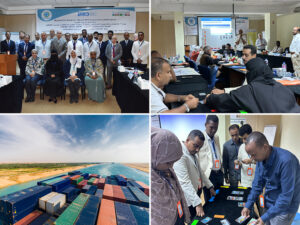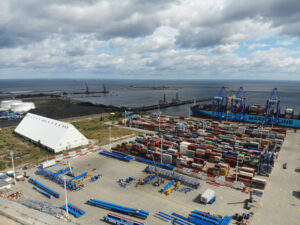Port Technology has provided a rundown of the five most viewed technical papers from Edition 79: Smart Ports and Supply Chain Technologies.
The most recent edition of Port Technology’s journal covered a variety of topics, ranging from automated brake thrusters to British ports after Brexit, with many papers focusing on the increased role of automation and smart technologies within ports and terminals.
However, five papers stood out as the most popular and shared pieces online: have you read these informative and insightful perspectives on the industry?
Read more: Editor’s Picks: The Best of Edition 79
Next Phase IIOT Data for Ports and Port Users:
The Industrial Internet of Things (IIOT) is a versatile technology that is already being used to monitor the “real-time location and status of millions of trucks, trailers, containers, pallets and other cargo units”.
Al Tama, Senior Director of Product Management at ORBCOMM, looks ahead in this paper to the future of IIOT, and how its evolution can optimize supply chains by providing more useful data for ports, terminals and their customers.
With the support of smarter assets and more powerful computing tools, Tama predicts that the collection and integration of big data, for “descriptive, predictive and prescriptive analytics”, will become a reality.
What Blockchain Has in Store for Logistics:
The Blockchain in Transport Alliance (BiTA), established in August 2017, has already accrued 400-plus members, all of whom are “participating in discussions with the goal to create and adopt industry standards for blockchain applications”.
Dean Croke, of FreightWaves and BiTA, has emphasised the role blockchain can play in the digital future of transport, as well as the ability of standards to create new business offerings, channels, and commercial outcomes.
According to Croke, who has discussed a number of projects that are changing the face of the sector, “innovation is the heartbeat of any emerging technology”. This is what the full potential of blockchain promises.
Read more: PTI Insight – Blockchain: The Missing Links
The more frequent arrival of increasingly massive megaships is a challenge for ports and terminals, affecting accessibility for other vessels and impacting the flow of cargo.
Dr. Byung Kwon Lee, a specialist in simulation for next-gen ports at the National University of Singapore, has explored how major container ports have “endeavored to achieve higher levels of productivity to meet climbing levels of demand”.
Specific and customized decision-making strategies, such as effective berth scheduling, quay crane scheduling and vehicle dispatching, are incredibly important for ports and terminals attempting to prepare themselves for the strenuous visit of megaships.
The Turning Point for Smart Ports:
The era of digital transformation has arrived, with ports and terminals finding themselves at the heart of this revolution.
As Wolfgang Lehmacher, World Economic Forum, argues, “robotic process automation, advanced analytics, the Internet of Things (IoT)” are “driving our intelligent global supply chains towards a smart tomorrow”, but how does the container shipping industry adapt to this change?
Lehmacher also highlights an important point: the term “smart” not only relates to efficiency and intelligence, but also “responsibility, sustainability and transparency”.
In addition to working as a singular entities, ports and terminals must operate as part of a greater chain, one which interacts and sustains itself by striving for change, connection and improvement.
Read more: SPSCT18: TBA’s 10 Tips for Smart Terminals
20 Years of High-Definition Simulation in the Port Industry:
How do ports and terminals lay the foundations for effective and responsive decision-making? Simulation tools, which provide incredibly detailed analysis and operational insight, could be the way towards a brighter future of optimized port performance.
Dr. Yvo Saanen, Pascal Bierhuizen and Arjen de Waal, of The TBA Group, have provided a highly technical overview of the significant benefits simulation presents to the industry today.
Transitioning from the past, when “a large majority of terminals were designed using spreadsheets”, certainly poses a challenge, but an understanding of process variations that can affect the way ports and terminal operate could provide vital solutions to ongoing difficulties facing operators.











